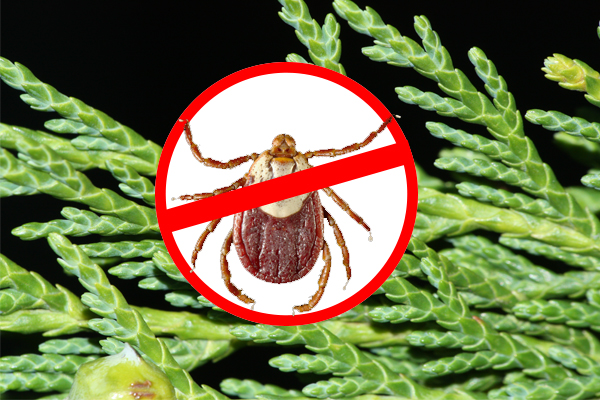In the United States, there were more than 25,000 reported and another 10,000 probable cases of Lyme disease in 2013, according to the CDC.
Most of the cases happen between June and August, with July being the worst month. Lyme disease is transmitted to humans through a tick bite, and there have been many reports of increased amounts of ticks this year.
But is there a better way to protect yourself than spraying yourself head to toe with chemicals? Absolutely.
The Case against Commercial Tick Repellents
Most commercial tick repellents contain a strong concentrate (at least 20% up to 100%) of a chemical called DEET (N, N-diethyl-m-toluamide). The CDC recommends that it needs to be sprayed on every couple hours, and you need to avoid the eyes, mouth, and hands, especially when putting it on the children.
But there are risks involved.
“Using any of these repellents is not without risk of adverse reactions, especially if used in large amounts or applied improperly,” states the New York State Department of Health.
The department issued a separate advisory article for children and pregnant women using repellents. They recommend to use a very small amount of repellent on children, because they have a higher risk of having a bad reaction to it, and to try reducing the exposure by covering yourself with longer clothes. Pregnant women are advised to avoid the repellent altogether to protect the unborn baby.
“DEET products have been widely used for many years but these products have occasionally been associated with some adverse reactions,” according to the New York State Department of Health.
The department warned of possible skin reactions (especially when using a DEET concentrate of 50% or above) and nervous system problems (from speech problems to seizures and even coma). It is suggested that using a low concentrate will provide a good but not great protection against mosquitoes, while reducing the risk of an adverse reaction.
Unfortunately, ticks are harder to repel, and they need a stronger concentration of the repellent. It is suggested to spray clothing not skin, and the DEET might damage synthetic fabrics and plastics.
“…The more DEET exposure, the greater your risk of experiencing adverse effects… you should use as little DEET as necessary for your situation,” according to New York State Department of Health.
It looks like using a DEET tick repellent is a balancing act of deciding which risk is greater – being bit and infected by a tick, or having an adverse reaction to the tick repellent.
What to Use Instead: Cedarwood Essential Oil
Nootkatone is natural compound derived from the essential oils of yellow cedar trees as well as citrus fruit, and it was recently discovered that it acts as a natural repellent for ticks, and also mosquitoes, and potentially bed bugs and lice.
Centers for Disease Control and Prevention consider it non-toxic and safe as a food additive.
“If you’ve had a grapefruit, you’ve consumed some nootkatone,” said Marc Dolan of the CDC.
Nootkatone does not just repel insects; it kills them in just 15 seconds when introduced to a strong dose of it, said Nick Panella, a CDC biologist. “It makes the insects hyperactive and they “basically vibrate themselves to death,” said Dolan.
**********
Big Sale on Paleo Valley!
Take 20% Off the Entire Store (Limited Time Only) – Here
Plus a Free Pack of Beef Sticks – Click Here
***********
How Can I buy it?
As of right now, pure Nootkatone is expensive – $4,000 per kilogram, and the CDC has it patented with only two companies licensed to sell it.
But because only 2% concentrate of Nootkatone is needed for repellent to work with 97 percent efficacy, people have had a lot of success using any cedarwood essential oil in the market.
Customers on Amazon.com have left positive reviews for many cedarwood oil products: the one by Sun Organic helped protect a person’s dog from ticks and fleas, a customer who bought one by NOW foods said that they noticed that “ticks hate cedar” and the product called Giles and Kendall Cedar Oil helped a homeowner protect their yard from ticks.
There are also a few homemade cedarwood oil based repellents on the Internet made by small businesses or herbalists.
But it’s very easy to make a spray repellent yourself. Purchase a spray bottle and add about 16 drops to 4 ounces of water (general guideline).
You can use a little more or less depending on your preference. Shake well before use and spray on yourself and your pets before going into an area that could have ticks: forests or areas with tall grass.
Thanks for reading! For better natural health, consider checking out the 2025 Earth Day Sale from Paleo Valley. Extended for a limited time for AltHealthWorks.com Readers!
Get the best organic and pasture-raised goods (electrolytes, whey protein and more) – Find the Sale Here
Take 20% Off the Entire Store Plus a Free Pack of Beef Sticks! – Here
Thanks for installing the Bottom of every post plugin by Corey Salzano. Contact me if you need custom WordPress plugins or website design.





